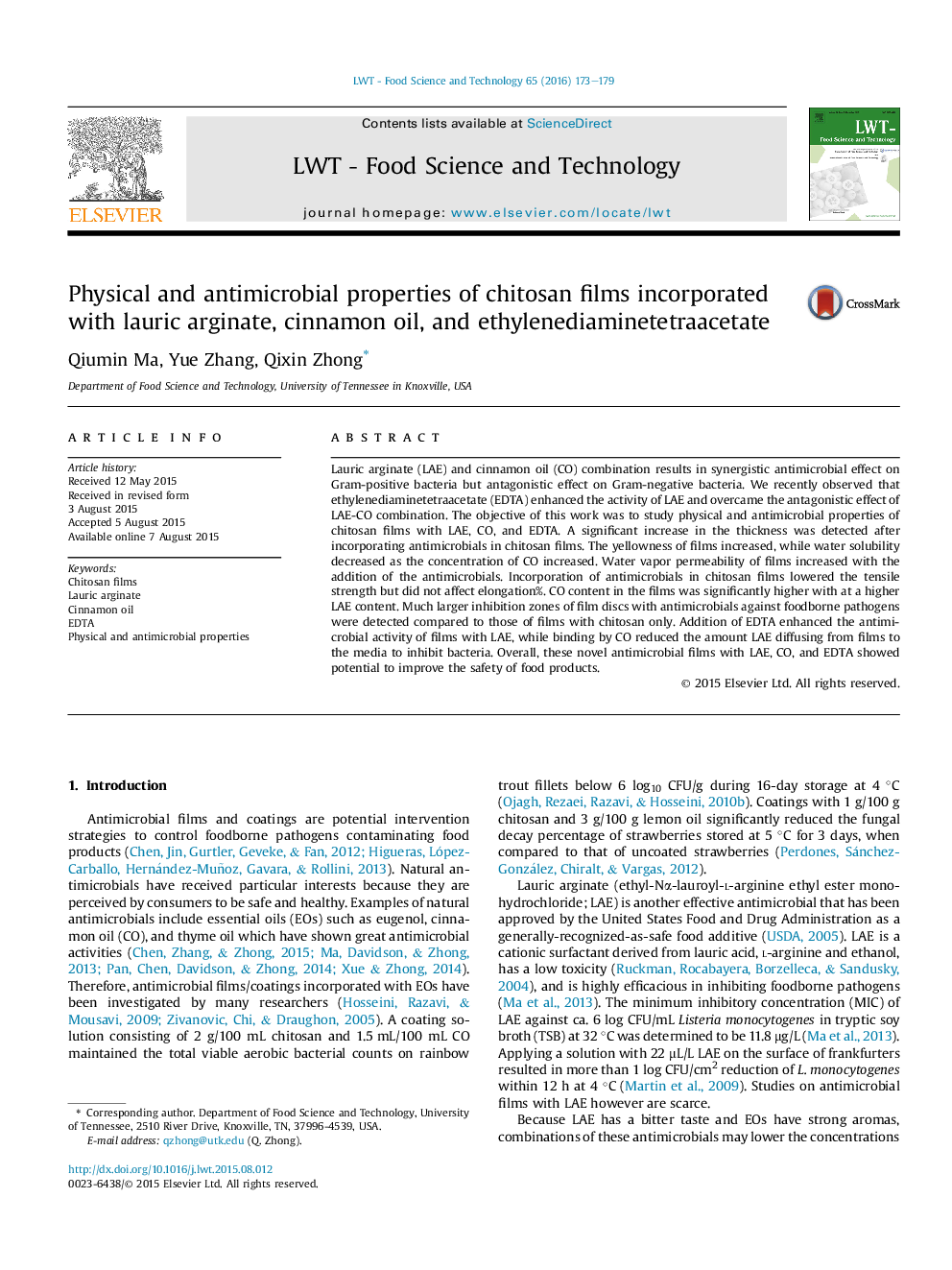| Article ID | Journal | Published Year | Pages | File Type |
|---|---|---|---|---|
| 6401502 | LWT - Food Science and Technology | 2016 | 7 Pages |
â¢Chitosan films with lauric arginate (LAE), cinnamon oil (CO) and EDTA were prepared.â¢Water solubility of films decreased with an increasing CO content.â¢Increasing LAE content increased the retention of CO in the films.â¢Film discs with LAE, CO, and EDTA had large inhibition zones.â¢Addition of EDTA in films with LAE enhanced antimicrobial activities.
Lauric arginate (LAE) and cinnamon oil (CO) combination results in synergistic antimicrobial effect on Gram-positive bacteria but antagonistic effect on Gram-negative bacteria. We recently observed that ethylenediaminetetraacetate (EDTA) enhanced the activity of LAE and overcame the antagonistic effect of LAE-CO combination. The objective of this work was to study physical and antimicrobial properties of chitosan films with LAE, CO, and EDTA. A significant increase in the thickness was detected after incorporating antimicrobials in chitosan films. The yellowness of films increased, while water solubility decreased as the concentration of CO increased. Water vapor permeability of films increased with the addition of the antimicrobials. Incorporation of antimicrobials in chitosan films lowered the tensile strength but did not affect elongation%. CO content in the films was significantly higher with at a higher LAE content. Much larger inhibition zones of film discs with antimicrobials against foodborne pathogens were detected compared to those of films with chitosan only. Addition of EDTA enhanced the antimicrobial activity of films with LAE, while binding by CO reduced the amount LAE diffusing from films to the media to inhibit bacteria. Overall, these novel antimicrobial films with LAE, CO, and EDTA showed potential to improve the safety of food products.
